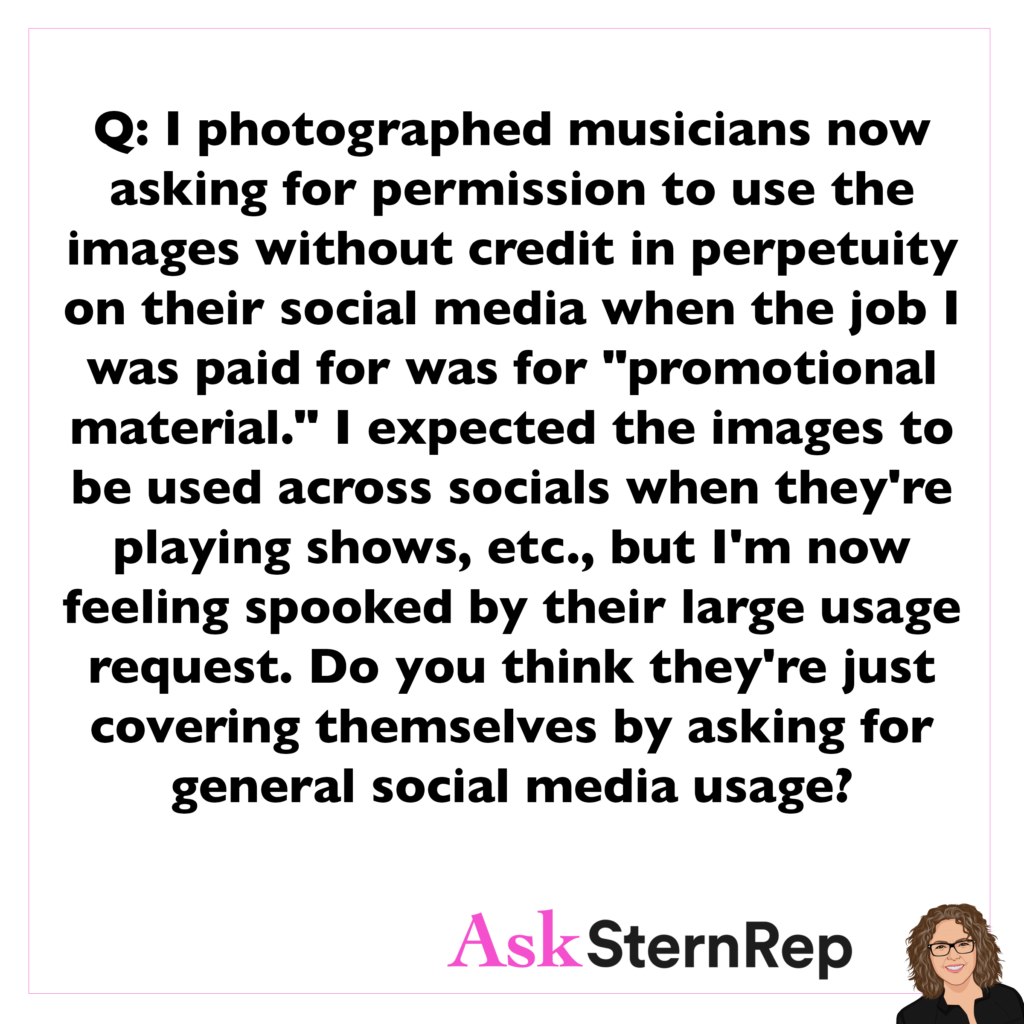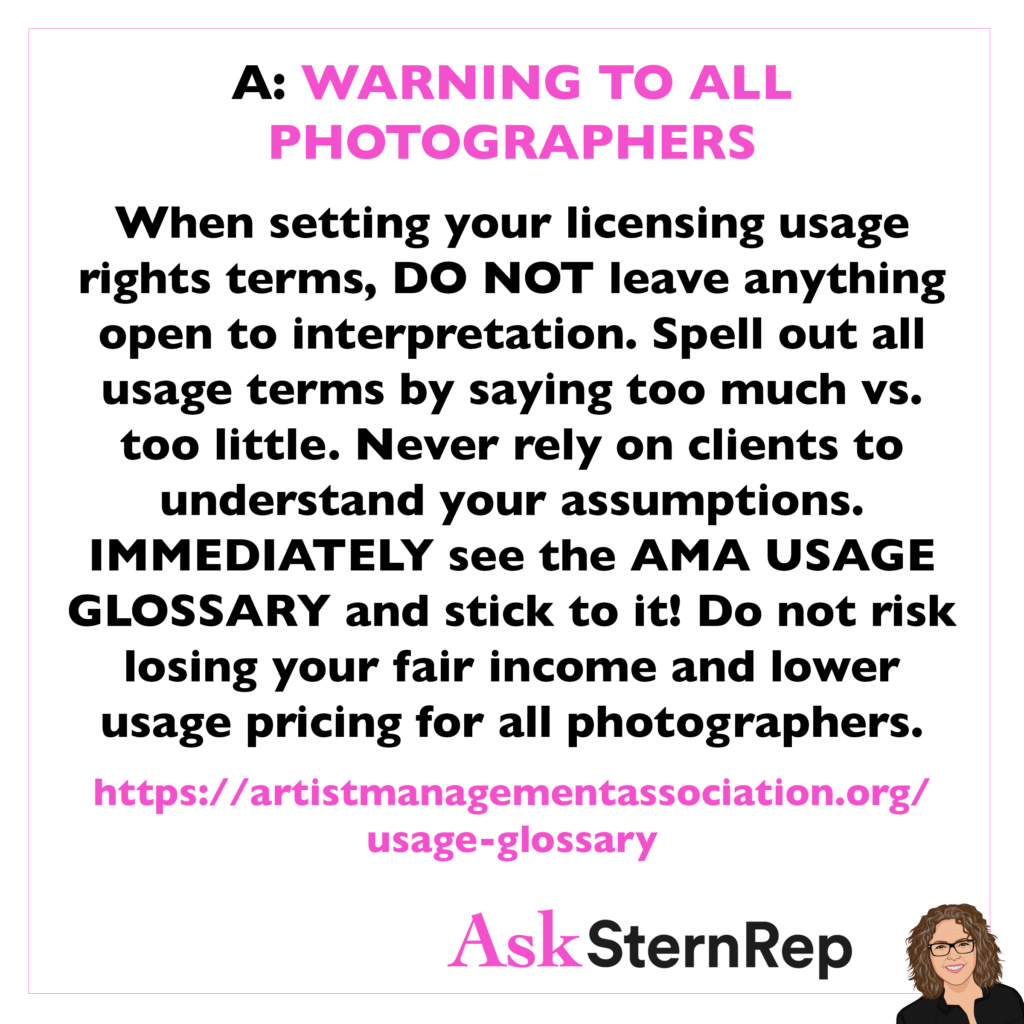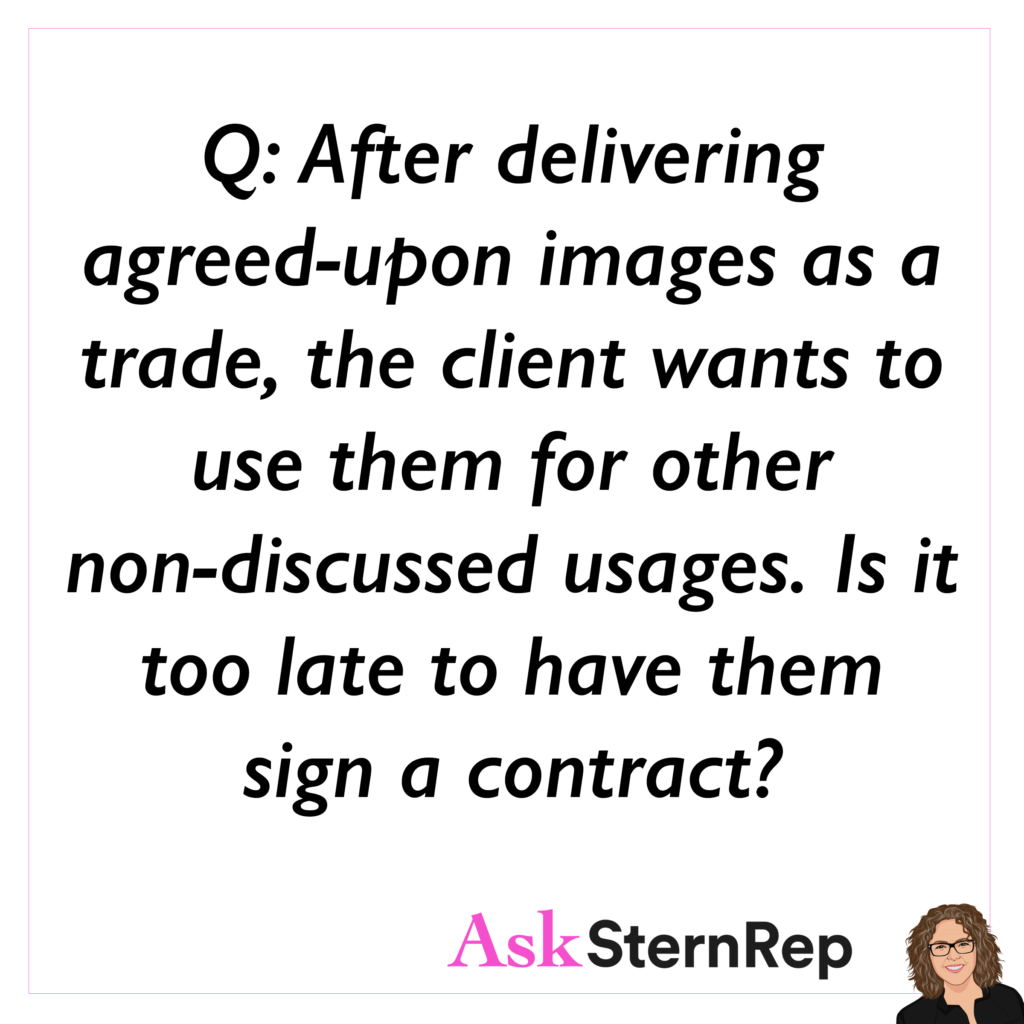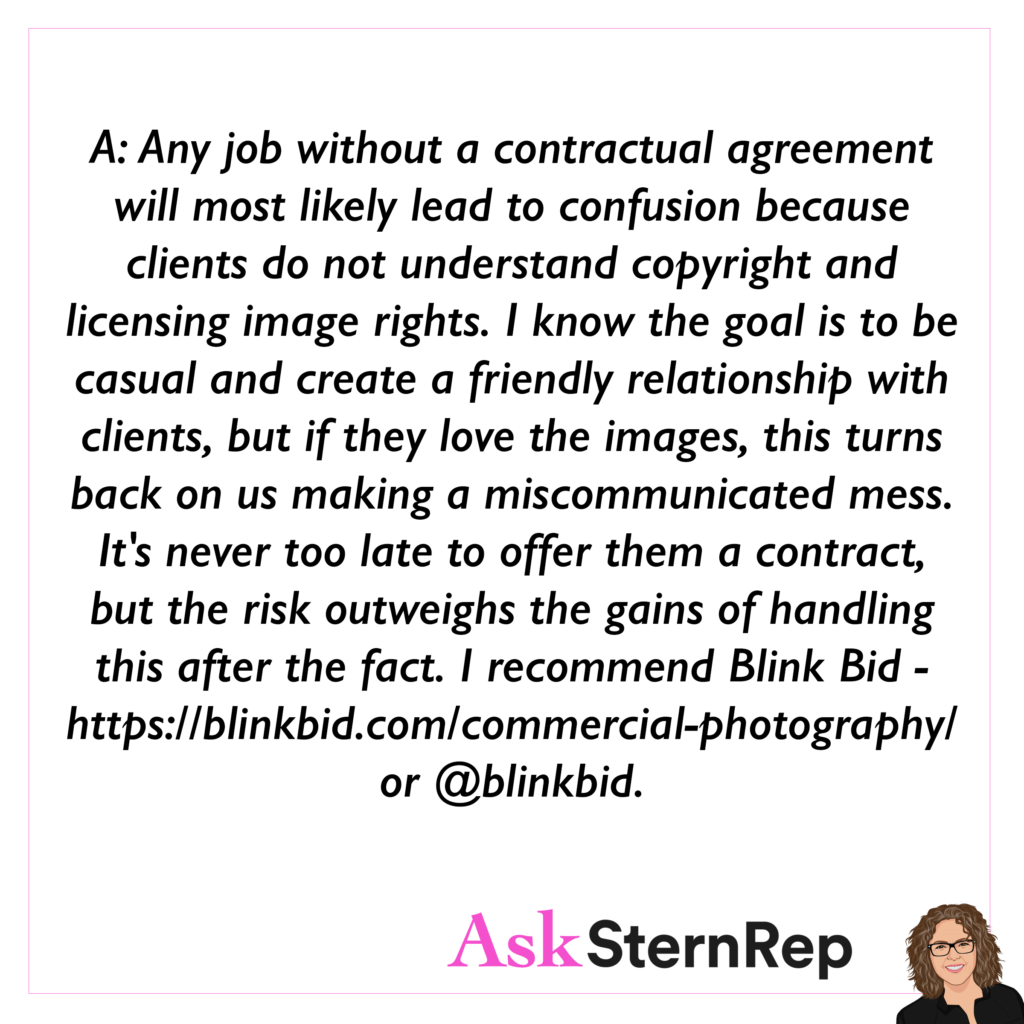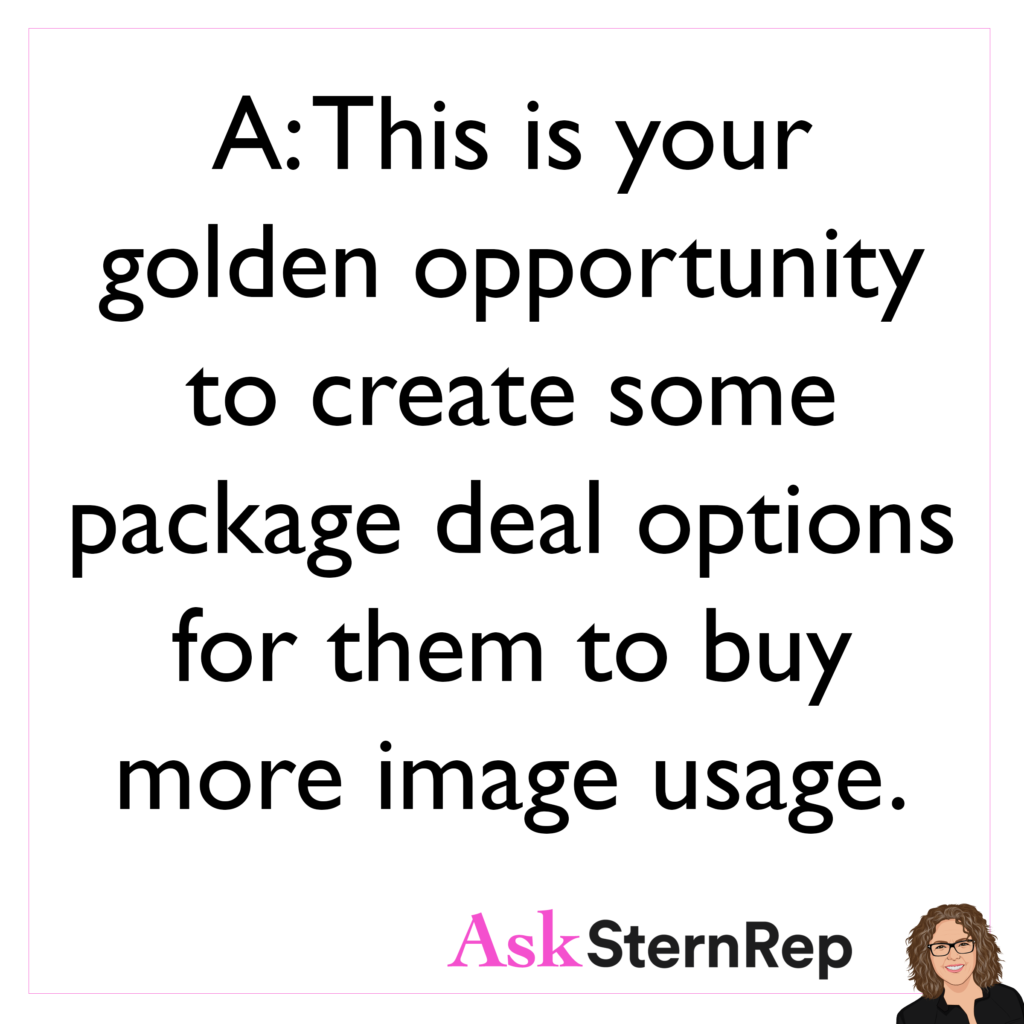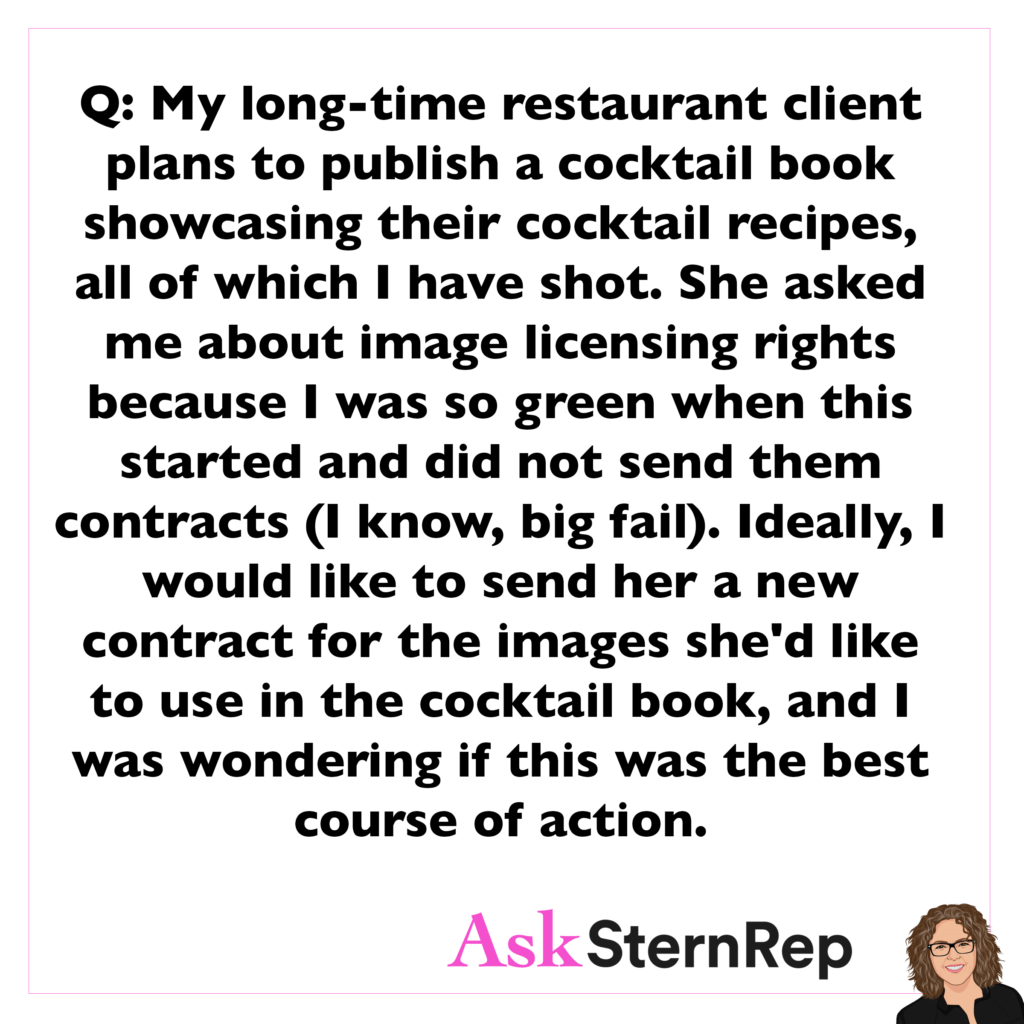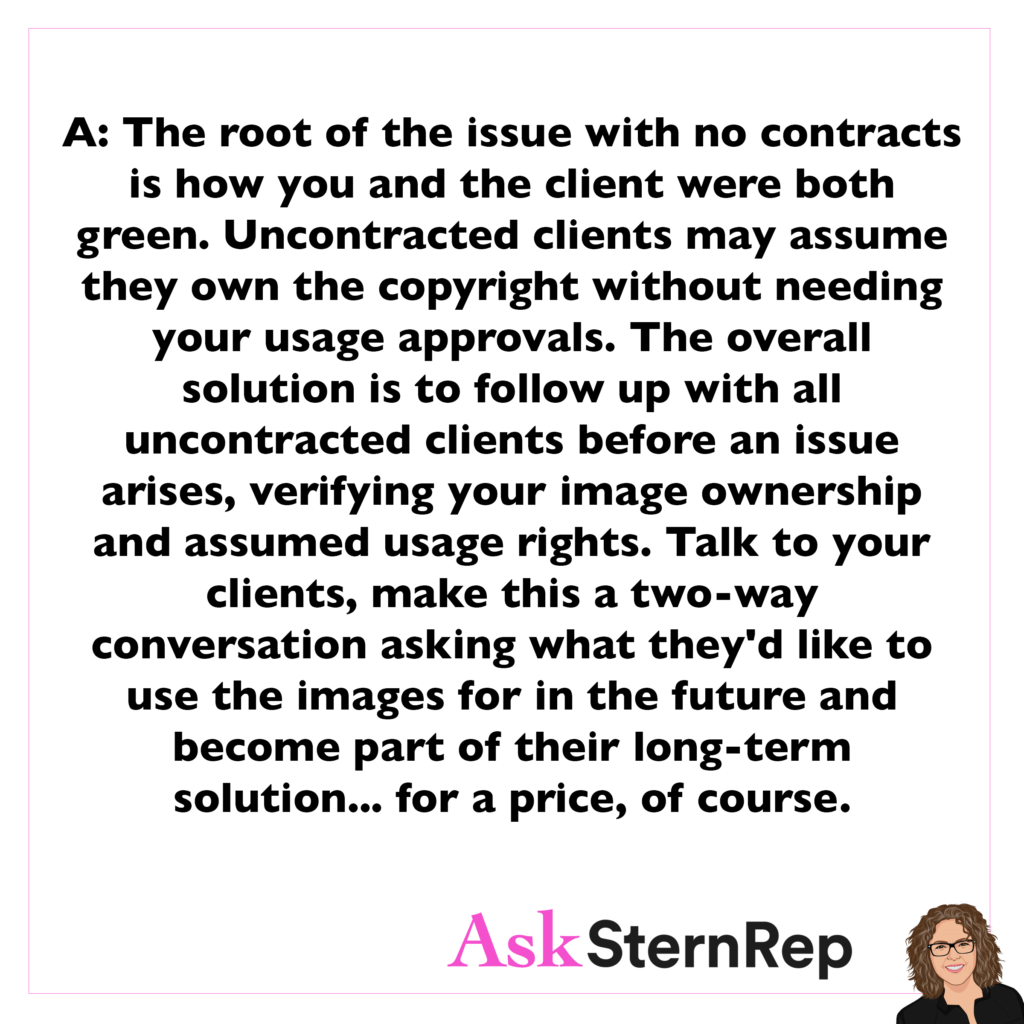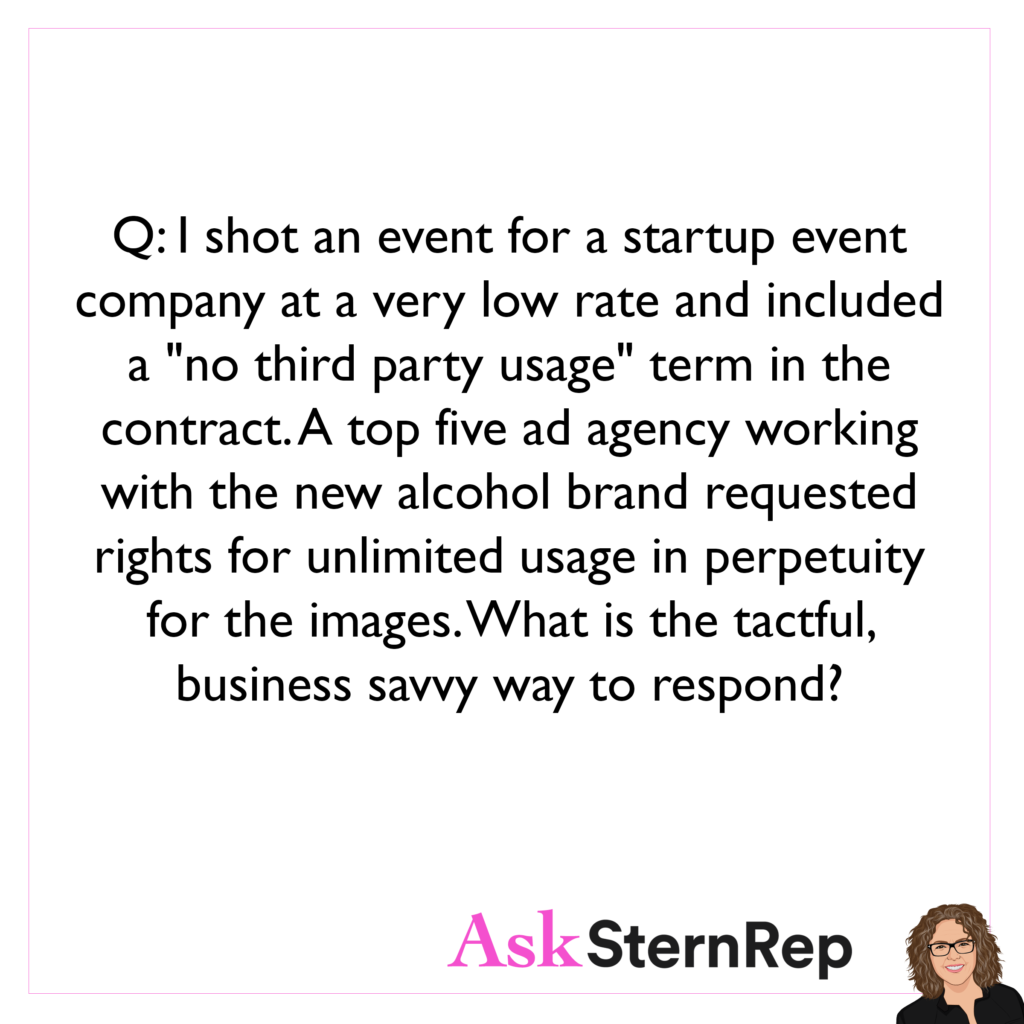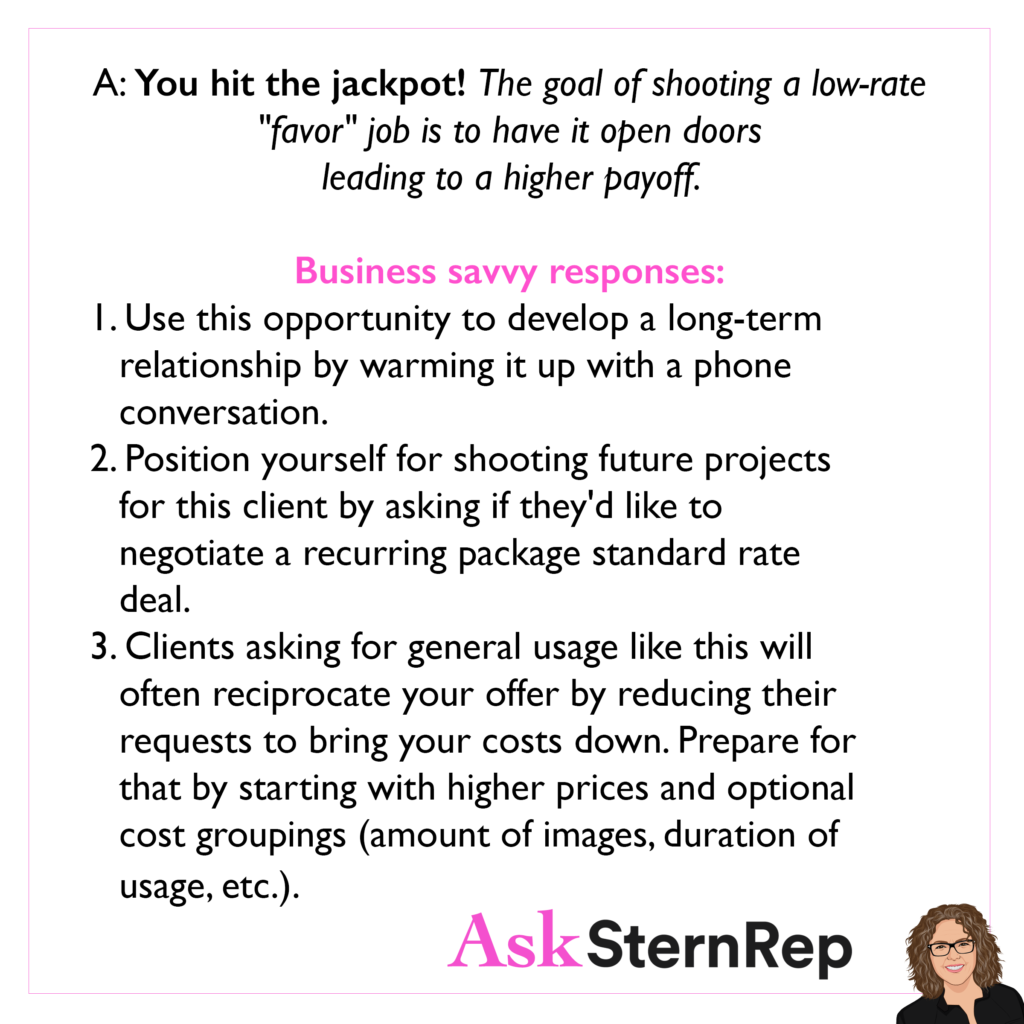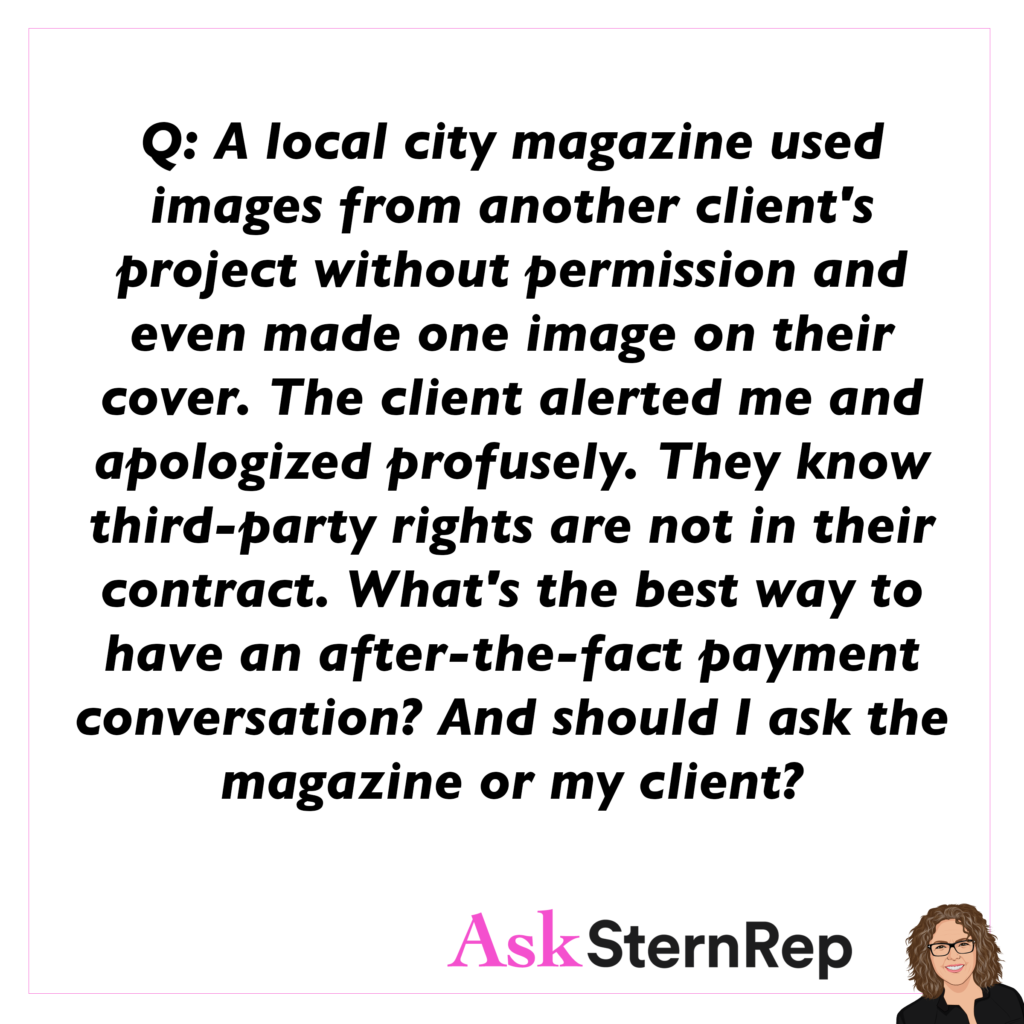
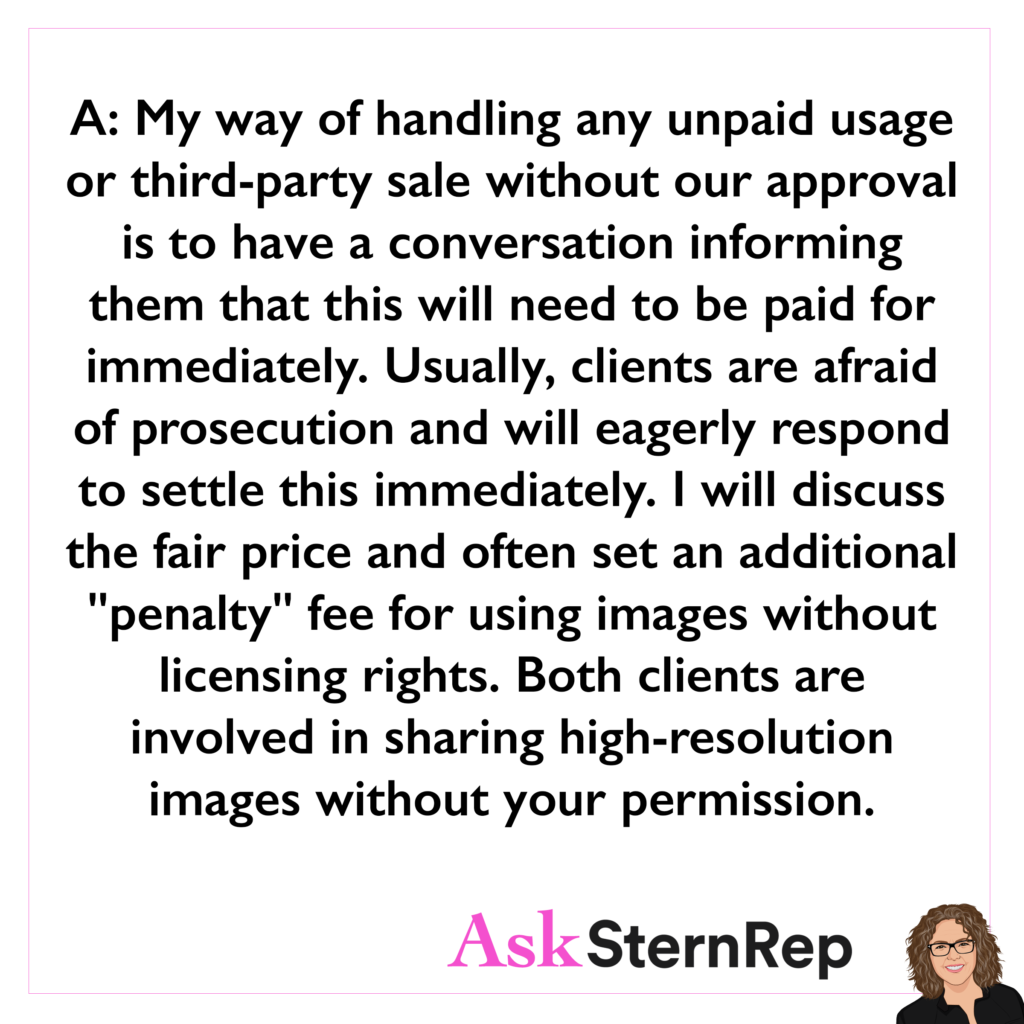
Q:
A local city magazine used images from another client’s project without permission and even made one image on their cover. The client alerted me and apologized profusely. They know third-party rights are not in their contract. What’s the best way to have an after-the-fact payment conversation? And should I ask the magazine or my client?
A:
My way of handling any unpaid usage or third-party sale without our approval is to have a conversation informing them that this will need to be paid for immediately. Usually, clients are afraid of prosecution and will eagerly respond to settle this immediately. I will discuss the fair price and often set an additional “penalty” fee for using images without licensing rights. Both clients are involved in sharing high-resolution images without your permission.

